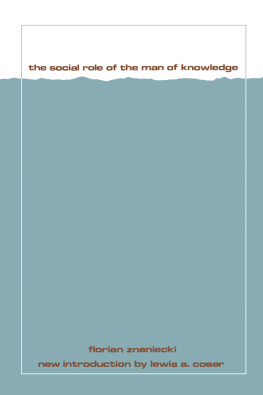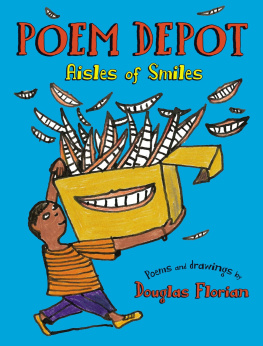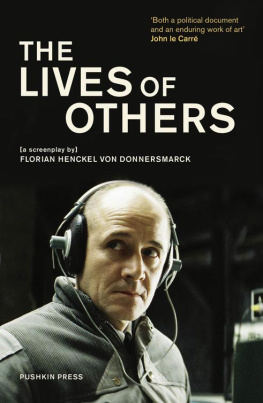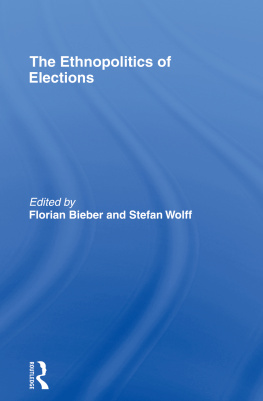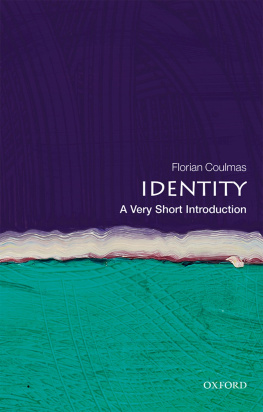Florian Jaton - The Constitution of Algorithms
Here you can read online Florian Jaton - The Constitution of Algorithms full text of the book (entire story) in english for free. Download pdf and epub, get meaning, cover and reviews about this ebook. year: 2020, publisher: MIT Press, genre: Romance novel. Description of the work, (preface) as well as reviews are available. Best literature library LitArk.com created for fans of good reading and offers a wide selection of genres:
Romance novel
Science fiction
Adventure
Detective
Science
History
Home and family
Prose
Art
Politics
Computer
Non-fiction
Religion
Business
Children
Humor
Choose a favorite category and find really read worthwhile books. Enjoy immersion in the world of imagination, feel the emotions of the characters or learn something new for yourself, make an fascinating discovery.

- Book:The Constitution of Algorithms
- Author:
- Publisher:MIT Press
- Genre:
- Year:2020
- Rating:5 / 5
- Favourites:Add to favourites
- Your mark:
- 100
- 1
- 2
- 3
- 4
- 5
The Constitution of Algorithms: summary, description and annotation
We offer to read an annotation, description, summary or preface (depends on what the author of the book "The Constitution of Algorithms" wrote himself). If you haven't found the necessary information about the book — write in the comments, we will try to find it.
The Constitution of Algorithms — read online for free the complete book (whole text) full work
Below is the text of the book, divided by pages. System saving the place of the last page read, allows you to conveniently read the book "The Constitution of Algorithms" online for free, without having to search again every time where you left off. Put a bookmark, and you can go to the page where you finished reading at any time.
Font size:
Interval:
Bookmark:
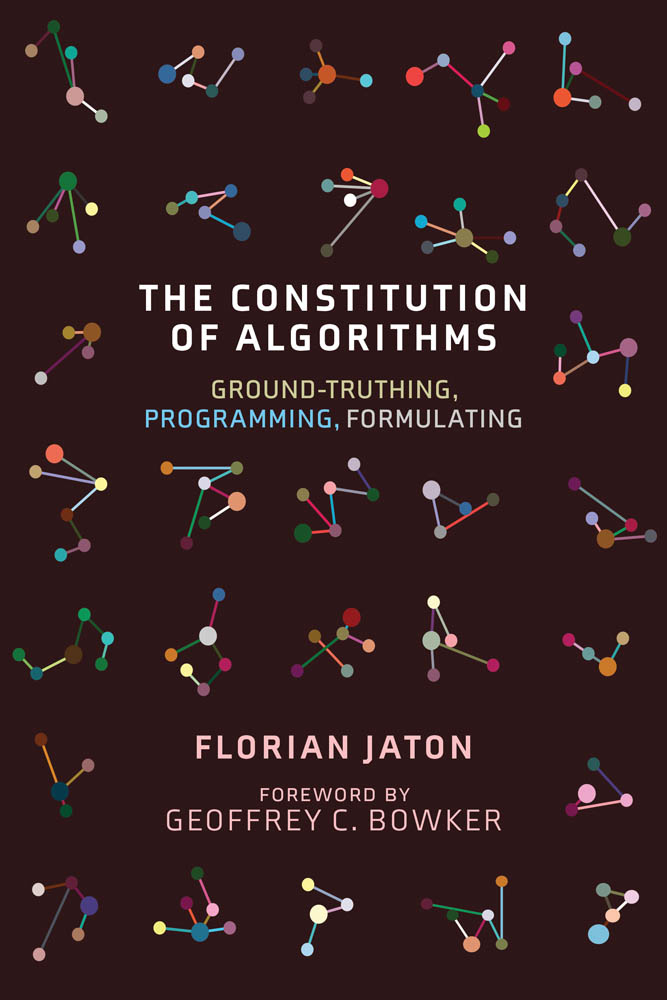
Inside Technology
Edited by Wiebe E. Bijker, Trevor J. Pinch, and Rebecca Slayton
A list of books in the series appears at the .
The Constitution of Algorithms
Ground-Truthing, Programming, Formulating
Florian Jaton
The MIT Press
Cambridge, Massachusetts
London, England
2020 Massachusetts Institute of Technology
This work is subject to a Creative Commons CC-BY-NC-ND license.
Subject to such license, all rights are reserved.

The open access edition of this book was made possible by generous funding from Arcadiaa charitable fund of Lisbet Rausing and Peter Baldwin.

Library of Congress Cataloging-in-Publication Data
Names: Jaton, Florian, author. | Bowker, Geoffrey C., writer of foreword.
Title: The constitution of algorithms : ground-truthing, programming, formulating / Florian Jaton ; foreword by Geoffrey C. Bowker.
Description: Cambridge, Massachusetts : The MIT Press, [2020] | Series: Inside technology | Includes bibliographical references and index.
Identifiers: LCCN 2020028166 | ISBN 9780262542142 (paperback)
Subjects: LCSH: Algorithms--Case studies. | Computer programming--Case studies. | Algorithms--Social aspects. | Mathematics--Philosophy.
Classification: LCC QA9.58 .J38 2020 | DDC 518/.1--dc23
LC record available at https://lccn.loc.gov/2020028166
d_r0
To Fanny
List of Figures
The CSF main building. On the left and right sides of the central patio, lines of offices and seminar rooms. In the center of the image, in air-conditioned rooms with glazed windows, three server farms store local programs, experiments, and databases. On the top floor, illuminated, one can discern the entrance to the faculty cafeteria.
The Labs hall. On the left, behind closed doors, the Labs cafeteria and seminar room. On the right, seven offices most of the time occupied by two researchers.
Inside one of the Labs offices. Two researchers were generally facing each other, though they were behind one to three large monitors.
Schematic of the pixel organization of a digital photograph as enabled by industrially produced and standardized CCDs and CMOSs. The schematic on the right is an imaginary zoom of the digital photograph on the left. Every pixel is identified by its location within a coordinate system (x/y). Moreover, assuming the image on the left is a color image, each pixel is described by three complementary values, commonly referred to as a red, green, and blue (RGB) color scheme. As most standard computers now express RGB values as eight-bit memory addresses (e.g., one byte), these triplets can vary from zero to 255 or, in hexadecimal writing, from 00 to FF.
Example of an academic paper published by an industrial research team. This paper dealing with deep neural networks for image recognition won the best paper award of the 2016 IEEE Conference on Computer Vision and Pattern Recognition. Though copyrighted by the Institute of Electrical and Electronics Engineers (IEEE) (the official editor of the conferences proceedings), its content is freely available in the arXiv.org repository. Source: He et al., 2016. Reproduced with permission from IEEE.
Excerpt from one of my logbooks and its translation into a .txt file. On the left, notes taken during a Lab meeting on November 16, 2014. On the right, the translation of these notes into a .txt file. The name of the file starts with l-meeting, thus indicating it refers to a Lab meeting. The second section, 141106, refers to the date of the logbook entry. The third section, nk, refers to the initials of the collaborator the note concerns. The fourth section, deep-learning-on-manuscripts, refers to the title of the presentation. The fifth and last section (l42738) indicates the location of the original note, here in logbook number 4, from page 27 to page 38.
Example of a small Python script used to browse the content of the .txt files. This script, working as a small computer program, makes the computer list the names of the .txt files whose content include the keywords ground truth and NK in a new document named 0_list-entries.
Schematic of precision and recall measures on . In this hypothetical example, (grey background) detected thirty targets (true positives) but missed eighteen of them (false negatives). This performance means that has a recall score of 0.62. The algorithm also detected twelve elements that are not targets (false positives), and this makes it have a precision score of 0.71. From this point, other algorithms intended to detect the same targets can be tested on the same ground truth and may have better or worse precision and recall scores than .
An exemplary comparison table among high-level face-detection algorithms. Two ground truths are used for this comparison table from Carnegie Mellon University (CMU) and the Massachusetts Institute of Technology (MIT). On the left, a list of algorithms named according to the papers in which they were proposed. In this table, the Percentage of Correct Detection (CD) indicates the recall values and the Number of False Positives (FP) suggests the precision values. Source: Hjelms and Low (2001, 262). Reproduced with permission from Elsevier.
Samples from Liu et al.s dataset. Pictures contain one centered and contrastive element. Source: Microsoft Research Asia (MSRA) public dataset, Liu et al. (2007).
Performance evaluations on Liu et al.s ground truth. On the left, a visual comparison among three different saliency-detection algorithms according to the ground truth. On the right, histograms that summarize the statistical performances of the three algorithms. In these histograms, the ground truth corresponds to the y axis, the best possible saliency-detection performance that enables the evaluation. Source: Liu et al. (2007, 7). Reproduced with permission from IEEE.
Image (a) is an unlabeled image of Liu et al.s ground truth; image (b) is the result of Wang & Lis saliency-detection algorithm; image (c) is the imaginary result of some other saliency-detection algorithm on (a); and image (d) is the bounding-box target as provided by Liu et al.s ground truth. Even though (b) is more accurate than (c), it will obtain a lower statistical evaluation if compared to (d). This is why Wang & Li propose (e), a binary target that matches the contours of the already defined salient object. Source: Wang and Li (2008, 968). Reproduced with permission from IEEE.
2013 comparison table between different saliency-detection algorithms. The number of competing algorithms has increased since 2007. Here, three ground truths are used for performance evaluations: ASD (Achanta et al. 2009), SED (Alpert et al. 2007), and SOD (Movahedi and Elder 2010). Below the figure, a table compares the execution time of each implemented algorithm. Source: Jiang et al. (2013, 1672). Reproduced with permission from IEEE.
Screen captures of the web application designed by the Group for its crowdsourcing task. On the left, the application when ran by a web browser. Once workers created a username, they could start the experiment and draw rectangles. When workers clicked on Next Image button, the coordinates of the rectangles were stored in .txt files on the Labs server. On the right, one excerpt of one of the seven scripts required to realize such interactive labels and data storage.
Font size:
Interval:
Bookmark:
Similar books «The Constitution of Algorithms»
Look at similar books to The Constitution of Algorithms. We have selected literature similar in name and meaning in the hope of providing readers with more options to find new, interesting, not yet read works.
Discussion, reviews of the book The Constitution of Algorithms and just readers' own opinions. Leave your comments, write what you think about the work, its meaning or the main characters. Specify what exactly you liked and what you didn't like, and why you think so.

